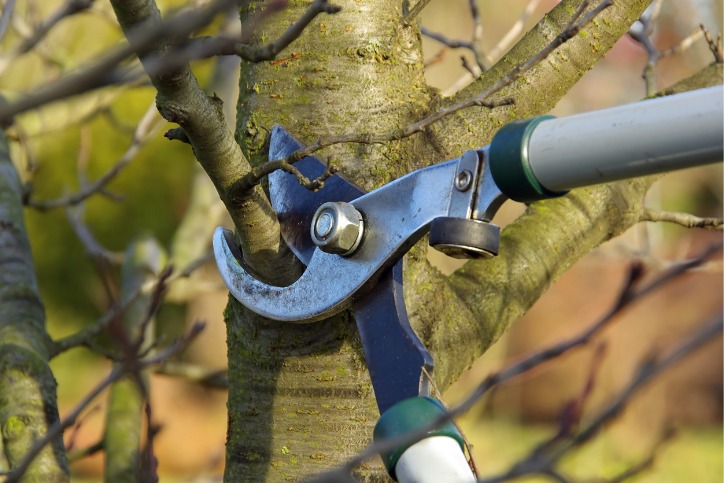TREE EDUCATION

As cool temperatures blow through North Central Florida, most homeowners and business owners take their minds off of tree care and focus on other projects on their properties. But don't take your mind off your trees for too long; spring is just around the corner! But as we proceed through the last period of the winter season, you might take a look at your trees and wonder, "Can I prune my trees in the winter?" or "What is the best time to prune trees?" According to our certified Gainesville arborists, winter and early spring are the perfect seasons for tree pruning!
In fact, winter tree pruning is essential for certain tree varieties, like fruit trees, requiring it to maximize fruit production in spring and summer and remain dormant in the winter. Contact us today to schedule Gainesville arborist services for your residential or commercial property and learn how having one of our certified, licensed, and insured arborists care for your trees can make all the difference!
With the cooling weather of late winter, many property owners are excited to revitalize their landscape. Winter and early spring are great times to add fresh mulch to your greenspace, thoroughly inspect your property's irrigation system, and start implementing your plans for all that you envision for your outdoor space come spring. But late winter also makes an ideal time to prune your trees.
This is known as dormant pruning, or the process of performing seasonal maintenance pruning on trees during the period when they aren't actively growing. When performed by a certified Gainesville arborist, such as those at SkyFrog Tree Service, pruning in winter can go a long way for your trees when spring comes, particularly for non-spring flowering trees and shrubs.
Pruning trees is a critical component of tree care in supporting the health and longevity of your trees. While tree trimming is usually conducted for reasons different from health concerns, pruning involves the removal of deadwood, or dead and diseased wood, and thinning out stems and branches to improve the tree's health, longevity, and appearance. Consider the following benefits of pruning trees in the winter.
The benefits of winter pruning become clear come spring when you see the first green leaves sprout from branches after the dormant season. Pruning trees during dormancy encourages them to burst with life in the spring, with strong and healthy new growth. Pruning involves removing diseased, infested, and excess branches, allowing trees to refocus their energy on the remaining branches and new growth. As spring arrives and trees bloom, the results can be beautiful and advantageous to your property.
Trees that have not received regular tree care from certified arborists may appear healthy on the surface, when in reality, they may suffer from a host of problems not visible to the untrained eye. Whenever a tree sustains a cut or laceration, whether on its trunk or from cut branches, it becomes more susceptible to infestations of bacteria, fungi, and insects. However, pruning the tree when it's dormant during winter remediates this risk. Pruning during the inactive season helps ensure greater tree disease resistance.
Pruning is vital to maintaining healthy, strong trees over time. Yet, the act of pruning injures trees, after which the tree-healing process takes place. While trees spend time and energy healing these wounds, they are not able to dedicate their energy to producing new leaves, fruits, flowers, or nuts. As such, it's best to prune most trees in the winter when they are dormant. Dormant pruning allows trees to focus on healing, which they can better accommodate during the year's colder months. Once healed, they'll be ready for springtime growth.
Among the benefits of pruning trees in winter is it's easier to evaluate their structure than during the late spring or summer months. When a tree is in full bloom at the height of summer, its leaves can conceal broken, damaged, or diseased branches. Once the leaves of your tree have fallen in autumn, the structure of your tree becomes more visible. For our trained arborists, it's also easier to spot dead or dangerous branches or parts of the tree. Pruning during the dormant season promotes improvements to your tree's structure.
Dormant pruning can offer a wealth of benefits for many trees, yet not every tree variety responds well to pruning in the winter. If you plan to prune your own trees, we advise that you do thorough research before bringing out your shears. Trees that produce sap, such as birch, elm, walnut, and maple trees, respond better to late-summer and early-fall pruning over winter or spring pruning. Hardwood trees can be pruned at just about any time of the year, so long as they are not under severe stress.
Deciduous trees, which lose their leaves in the fall, respond best to dormant pruning, but they shouldn't be pruned until they go into complete dormancy. The following trees can be pruned in the winter. The best way to determine whether your trees need winter pruning is with the help of a professional arborist. Call SkyFrog Tree Service today to schedule a tree service appointment.
Winter pruning can transform the health and vitality of your trees, but it can also be challenging, especially if you have many trees on your property or your trees are very large. If you want to revitalize the trees on your property, contact SkyFrog Tree Service for professional Gainesville tree care from a certified arborist. We can customize a winter tree care plan based on the unique needs of your property for beautiful, healthy trees today and in the future.